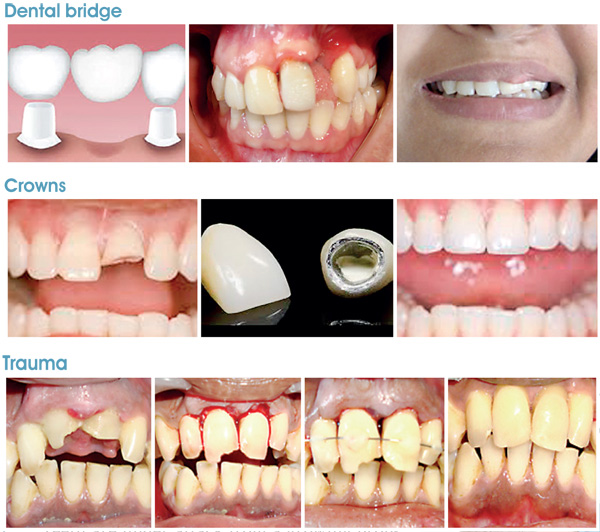For a brighter smile
The beauty of a smile is enhanced by a set of perfect teeth. However, not everyone is able to protect his/her teeth from harm and it is at this point that men, women and children have to turn to ‘Restorative dentistry’. Restorative dentistry is the study, diagnosis and integrated management of diseases of the teeth and their supporting structures. It also involves the rehabilitation of the dentition to be functional and meet the needs of the aesthetic requirements of an individual.
This ‘discipline’ encompasses:
Operative dentistry – the restoration of teeth damaged by caries, tooth wear or trauma
Endodontics – the diagnosis and management of disorders of the tooth pulp and the tissues surrounding the root of a tooth
Periodontology – the prevention, diagnosis and management of disorders of the tissues supporting the teeth (gums) and their associated structures (management of ‘gum diseases’)
Prosthodontics – the management of teeth and associated structures lost as a result of disease, inheritance or trauma and replacement by removable (dentures) and fixed prostheses (crowns and bridges and maxilla-facial prosthesis including implants supported prosthesis). Crowns are used to cover damaged, cracked or chipped teeth or to generally restore teeth. When cemented into place, they fully cup over the portion of a tooth which lies at and above the gum line. Dental bridge, meanwhile, is a custom-made device anchored to neighbouring teeth that replaces one or more missing teeth.
Paedodontics – this includes the diagnosis and management of dental problems in children. Implants – these are ‘screw in teeth’. Modern implants are made of titanium metal which osseointegrates (fuses) with bone. When these implants have to be performed there should be adequate bone in which to place an implant, though grafting (adding bone) can sometimes be carried out to increase the amount of bone available.
[Dr. Sivaguru is a Consultant in Restorative Dentistry and Committee Member of Section A of the Sri Lanka Association for the Advancement of Science (SLAAS)]




